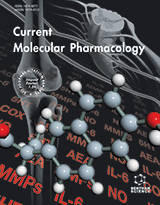Abstract
Background: Acute and chronic sleep deprivation present many health-related problems in modern societies, mainly concerning the immune system. Immune factors, particularly the interleukins, regulate sleep and, therefore, may be altered by sleep deprivation (SD). Objectives: We aimed to investigate the possible effects of acute and chronic sleep deprivation on selected cytokines, including interleukins (IL-1β, IL-9, IL-17, and IL-23) and tumor necrosis factor- alpha (TNF-α).
Methods: The animals were grouped into acute sleep-deprived (SD; for 24 hours) and chronic sleep-deprived (8 hours a day for 10, 20, and 30-days). The SD was induced using the multipleplatforms model. The serum levels of cytokines were measured using commercially available ELISA.
Results: The serum levels of IL-1β were significantly reduced after acute SD, whereas they were increased after 20-days of chronic SD. The IL-9 levels were reduced after acute SD, increased after 10-days of SD, and reduced again after 30-days of SD. Conversely, the levels of IL-23 were not changed after acute SD, reduced after 10 days of SD, and increased after 30-days of SD. Levels of TNF-α were not changed after acute SD, whereas they were increased after 20 and 30- days of SD.
Conclusion: In conclusion, both acute and chronic SD distinctly disturb the immune profile, which might result in the emergence of various pathologies presented during sleep deprivation.
Keywords: Sleep deprivation, cytokines, interleukins, rat model, platform, immune profile.
Graphical Abstract
[http://dx.doi.org/10.1016/j.cois.2017.09.008] [PMID: 29208223]
[http://dx.doi.org/10.1007/s00424-011-1044-0] [PMID: 22071480]
[http://dx.doi.org/10.15585/mmwr.mm6506a1] [PMID: 26890214]
[http://dx.doi.org/10.1016/j.jsmc.2014.11.009] [PMID: 26055669]
[http://dx.doi.org/10.1152/physrev.00010.2018] [PMID: 30920354]
[http://dx.doi.org/10.1038/srep45528] [PMID: 28374797]
[http://dx.doi.org/10.1016/j.bbi.2015.01.004] [PMID: 25640603]
[http://dx.doi.org/10.1186/s12936-015-0690-7]
[http://dx.doi.org/10.1080/15402002.2015.1126596] [PMID: 27077395]
[http://dx.doi.org/10.1016/j.bbi.2015.03.011] [PMID: 25849976]
[http://dx.doi.org/10.2174/138161208786549281] [PMID: 19075717]
[http://dx.doi.org/10.1007/s00737-016-0672-y] [PMID: 27699637]
[http://dx.doi.org/10.1016/j.bbi.2010.12.004] [PMID: 21167930]
[http://dx.doi.org/10.1186/1479-5876-9-28] [PMID: 21418620]
[http://dx.doi.org/10.1016/j.cytogfr.2013.09.001] [PMID: 25215394]
[http://dx.doi.org/10.1172/JCI28508] [PMID: 16670765]
[http://dx.doi.org/10.5665/sleep.4574] [PMID: 25669189]
[http://dx.doi.org/10.1016/j.beem.2010.08.014] [PMID: 21112025]
[http://dx.doi.org/10.1172/JCI117936] [PMID: 7738205]
[http://dx.doi.org/10.1016/j.neurobiolaging.2006.02.012] [PMID: 16569464]
[PMID: 11396212]
[http://dx.doi.org/10.1016/j.brainresbull.2015.11.017] [PMID: 26616531]
[http://dx.doi.org/10.1093/ilar.38.1.41]
[http://dx.doi.org/10.1016/j.neulet.2011.05.025] [PMID: 21624432]
[http://dx.doi.org/10.1155/2015/678164] [PMID: 26417606]
[http://dx.doi.org/10.1136/ard.2008.097089] [PMID: 19286907]
[http://dx.doi.org/10.1016/j.cyto.2011.09.010] [PMID: 21996014]
[http://dx.doi.org/10.1158/0008-5472.CAN-13-3014] [PMID: 24448240]
[http://dx.doi.org/10.1111/j.1749-6632.1998.tb08323.x] [PMID: 9917875]
[PMID: 3262676]
[http://dx.doi.org/10.1161/01.STR.24.11.1746] [PMID: 8236352]
[http://dx.doi.org/10.1016/S0091-6749(00)90185-4] [PMID: 10629460]
[http://dx.doi.org/10.3892/mmr.2013.1258] [PMID: 23291628]
[http://dx.doi.org/10.9775/kvfd.2015.14371]
[http://dx.doi.org/10.1016/j.ramd.2016.02.005]




























